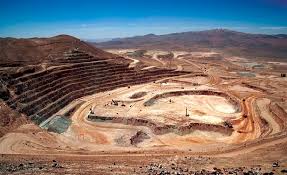Workers at the Escondida mine, the world’s largest copper mine located in northern Chile, initiated a strike on Wednesday after pay negotiations with Australian mining giant BHP collapsed. The strike casts uncertainty over the global copper market, though analysts suggest the immediate impact may be tempered by current stockpiles.
The Escondida mine, which produces approximately five percent of the world’s copper annually, plays a critical role in supplying the metal, which is essential for everything from electrical wiring to rechargeable batteries. However, the strike’s potential to disrupt production has raised concerns about the long-term availability of the commodity, especially if the work stoppage extends beyond a week or two.
BHP, which owns a majority stake in the open-pit mine, announced that scaled-back operations would continue during the strike, with non-union staff implementing contingency plans. The last major strike at Escondida in 2017 halted production for 44 days, costing BHP $740 million and reducing Chile’s annual economic output by 1.3 percent.
The union representing the mine’s 2,400 workers cited unmet demands for larger bonuses, shorter workdays, and compensation based on tenure as reasons for the strike. Reports indicate that while BHP offered a one-time bonus of nearly $29,000, the union had demanded $36,000.
Earlier this year, rising global copper prices fueled the union’s demands for a greater share of the mine’s profits. However, copper prices have since declined, with significant stockpiles accumulating in China and other locations. According to Ole Hansen, a commodity analyst at Saxo Markets, inventories in London and Shanghai warehouses have reached levels not seen since the early stages of the COVID-19 pandemic in 2020, reflecting a mismatch between supply and demand due to weakened demand.
Despite the strike, BHP’s share price in Sydney only dipped by around one percent by midday Wednesday. The company, often referred to as the “Big Australian,” has been actively seeking new sources of copper, with a failed bid to acquire rival Anglo American earlier this year highlighting its ambitions.
Copper remains a crucial component in the transition to clean energy, used in the production of solar panels, electric vehicles, wind turbines, and rechargeable batteries. Prices for the metal have risen by about 400 percent over the past 25 years, reaching over $10,000 per tonne in April. Global demand for copper is expected to grow by up to 2.5 percent annually.
BHP holds just under 60 percent ownership of the Escondida mine, with minority stakes held by Rio Tinto and Japan’s JECO Corp. Chile, which accounts for about a quarter of the world’s copper production, remains a vital player in the global market, followed by Peru, China, and the Democratic Republic of Congo.












